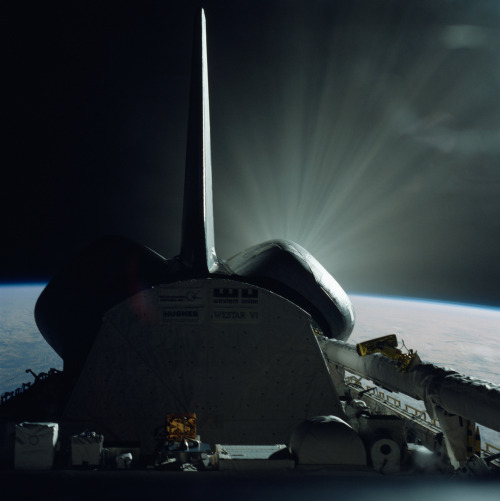I Feel Like The World Could Benefit From A Realistic Visual Sci-fi That Heavily Focuses On Characters
I feel like the world could benefit from a realistic visual sci-fi that heavily focuses on characters and moods. Space as it really is has a huge potential for moods. The way in which space exposes humans to all number of dangers, physical and psychological, is something that has not really been explored enough.
I doubt that every space habitat will have spin gee. If we understand our current political system, we can assume that a freefall, non-rotating habitat would be cheaper to live in. People who decide to move to space for whatever reason will use their life savings to find a cramped, tiny cupboard in some space station.
Your bones get thinner. Your eyesight gets worse. Your blood pressure goes down. You don't feel as hungry. Your muscles shrink. Your skin loses all its tan from hiding in the dark. The tops of your feet get calicoes from hooking onto things.
You get depressed. Isolated. Claustrophobic. Tired of seeing the same room every day. Irritable. Irrational. Anxious. After a long time, atheists would turn superstitious.
These things have been explored a bit from what I've seen, but they seem to be background elements of some greater story. Maybe it's just not possible to make this topic the focus of a movie. The closest I've seen is Ad Astra, which is an okay movie.
We will eventually spend years in space. Someday, people will be born there. We will be sickly and depressed, even with spin gee. This would have signified the ultimate migration of human living from the natural to the mechanical. From death by biology to death by astrodynamics. Where you have to be a technical genius to not die if something malfunctions.
Space is not luxurious. People won't actively choose to move there en masse without a good reason. Migration into space will take hundreds of years.
Don't get me wrong, The Expanse is one of my favourite shows, but I don't watch it for the combat and politics.
More Posts from Cozy-airlessness and Others
this year we’re asking ourselves if the people we’re supporting are supporting us too

Challenger thrusting, STS-41B, 3-11 February 1984.



Space looks very different to how film and television might show. Lots of sci-fi shows or movies portray the stars and galaxy behind a planet, and while it can look pretty, it also is very unrealistic. Stars are very dim. The galaxy is even dimmer. Anybody that lives in a light-pollluted area knows these things. Sunlight, and the light from it that shines onto the planets, is very very bright. This is why you can’t see stars during the day time. You can turn the exposure of your camera up to see both the planet and the stars, but then the planet becomes blindingly bright, and you get lots of camera glare.
Images taken using Space Engine 0.990.37.1720
Unrelated spiritual stuff below
This post probably sounds like nitpicking, and I guess it is. I’m not sure if I like the spirit of space being tampered with just to make things look better in a blockbuster movie. I believe the darkness and quietness is what contains the energy of space, and that feature of it is sacred. Space to me is an ocean, and filling space with clouds/nebulae and planets in a fictional setting feels a lot like completely filling the oceans with seaweed and sand. Planets are extremely far apart, and that is a blessing, as otherwise they would collide with each other. I don’t really have any personal grudges on people that exaggerate space for visual or story related reasons, I think it’s more of a cultural issue, and one that will be resolved over enough time as life on Earth begins to wander into space.




Titan: Ligeia Mare and environs
Numerous lakes of hydrocarbons and seas are visible: at the top is the prominent body of liquid known as Ligeia Mare; the main centers are in the northernmost part of Kraken Mare and on the island of Mayda Insula; and in the bottom center is a portion of Punga Mare. In the lower right corner, Jingpo Lacus reveals a series of sinuous canals in its lake bed, while Bolsena Lacus appears in the lower left corner.
Credit: NASA/JPL-Caltech/Space Science Institute/Ian Regan

SCP-268-FR - “Dix-Mille Lucioles”









TODAY IN HISTORY – On June 18, 1983, the Space Shuttle Challenger carried astronaut Sally Ride into Earth orbit, launching her into history as the first American woman in space. It was seventh space shuttle mission, lasting 6 days, 2 hours, 23 minutes, 59 seconds. When the shuttle returned, Dr. Ride said, “I’m sure it was the most fun that I’ll ever have in my life.”
(NASA)

wlw

Crescent Earth seen from the Moon

Peripheral vision. Anna Lee Fisher prepares for the 14th mission in Space Shuttle history & the 2nd of Discovery, Nov 1984. Dr. Fisher spent 8 days in space during her career & also assisted in the development of the Canadarm & the design of spacesuits for women. Selected as an astronaut candidate in 1978, her other accomplishments include being a Doctor of Medicine & a Masters in Science graduate.

Planet Uranus, observed by Voyager 2 on January 25, 1986.

21 · female · diagnosed asperger'sThe vacuum of outer space feels so comfy :)
233 posts